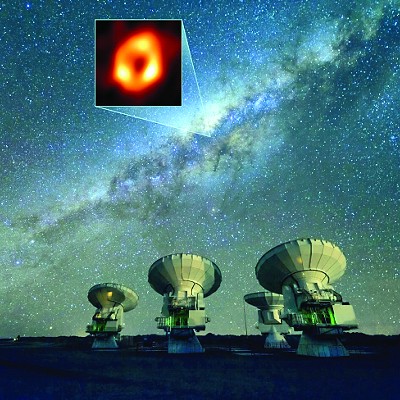A new study led by the University of Arizona shows the missed opportunities of testing and tracing that may have prevented the virus from ravaging countries the way it has.
The study, "The emergence of SARS-CoV-2 in Europe and North America," published in the journal Science, is also the first and only published study to challenge the notion that the first reported case in the United States sparked the viral outbreak in North America.
"It grew out of my own questions about the first case in the US, up in the Seattle area," said UA professor of ecology and evolutionary biology Michael Worobey, who led the study. "I had initially been pretty convinced by others that it probably started the outbreak in North America. But as I got deeper into gene sequences from all around the world, I got a better feel for how the virus evolved, and had my doubts."
Researchers on the study examined travel records and thousands of genome sequences from public databases to decipher and map the spread by tracking mutations, genetic similarities and geographic overlaps. Computing the simulations was so intensive, some processes took more than a week to run, and had to be calculated multiple times.
"One thing about this outbreak is that we've generated more data in a shorter time period than with any other viral outbreak," Worobey said. "Which is good that there's this massive amount of data, but analyzing it and collating it takes a lot of time."
The first known COVID patient in the US, nicknamed "WA1," was a Chinese national flying into Seattle from Wuhan on Jan. 15. However, it was not until weeks later that additional outbreaks began throughout Washington.
Worobey and his team examined the genomic data of the ensuing outbreaks, and found the genomics were similar to WA1, but different enough to indicate that "the jump from China to the U.S. likely occurred on or around Feb. 1 instead." These and similar findings indicate how the first documented infections in the US and Europe did not spread into full outbreaks—it was instead continued travel and lack of early tracing.
"If you could go back in time to late January or February, we did have a chance both in Europe and North America, to plug the holes as they arose," Worobey said. "We could have prevented this from getting out of control the way it has in the U.S., but we didn't get the tools rolled out in time."
Worobey says WA1 actually serves as a model of what you should do in a viral outbreak. This first patient reached out to doctors, cooperated with public health officials, and self-isolated to prevent the spread of the disease. Worobey has previously worked on genome sequencing for HIV, and says it is a similar situation for that outbreak.
"You've got a particular individual, this 'patient zero' that people would like to pin blame on, when in fact it doesn't look like he initiated the outbreak, and the outbreak may well have started from an American or visa holder travelling back from China," Worobey said. "Right at the beginning of February is when the travel ban on Chinese people traveling into the States was initiated, and the introduction seems to have occurred right round that time. It's quite likely that it wasn't even a Chinese person that brought this virus into the States."
The study also found errors in multiple genomes published by the British Columbia Center for Disease Control that may have suggested that the virus spread from Canada into the U.S.
"Generally speaking, you had the earliest outbreaks starting on the West Coast, even though it didn't come from that first guy on Jan. 15," Worobey said. "It was probably from a separate introduction to Washington from China a little later at the beginning of February, and it spread widely through Washington and moved up into British Columbia and sparked several cases we've sequenced in Arizona as well in the spring."
One of the main lessons the researchers learned: early containment does indeed work. They attribute the lack of virus spread from January detections in Seattle and Germany on contact tracing, isolation, and a high degree of compliance of infected individuals.
The study states that by delaying COVID-19 outbreaks by even a few weeks in the U.S. and Europe, the public health response to the WA1 case in Washington State (along with a particularly impressive response in Germany to an early outbreak) bought crucial time for their own cities, as well as other countries and cities, to prepare for the virus when it finally did arrive.
"The virus isn't invincible," Worobey said. "As we've shown in Arizona over the past couple of weeks, simple things like everyone wearing masks can have dramatic effects and save lots of lives."
In total, the study involved an interdisciplinary team of scientists from 13 research institutions throughout the United States, United Kingdom, Belgium and Canada.
"Now that we have these tools, they'll be useful for future pandemic analyses," Worobey said. "One of the things we're immediately doing is using these same techniques to try and figure out when this virus first infected humans in Hubei Province in China. We're getting interesting results that we should be able to share within weeks."













